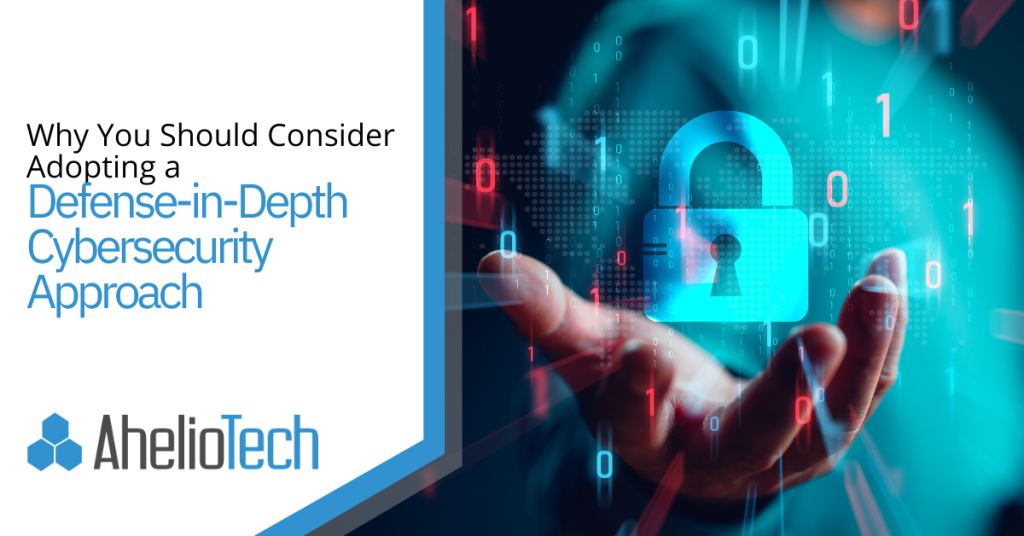Why You Should Consider Adopting a Defense-in-Depth Cybersecurity Approach

Cybersecurity threats are constantly evolving and increasing in sophistication, making it essential for companies to take robust security measures to protect their valuable data. One of the most effective strategies is the defense-in-depth cybersecurity approach.
The defense-in-depth approach involves deploying multiple layers of security measures to protect against potential threats, ensuring that if one layer fails, there are additional measures in place to protect the system. This article will delve deeper into the benefits of adopting a defense-in-depth cybersecurity approach and the essential elements that make up a robust defense-in-depth strategy.
What are the Benefits of a Defense-in-Depth Cybersecurity Approach?
Increased Protection
The primary benefit of adopting a defense-in-depth cybersecurity approach is increased protection against cyber threats. By deploying multiple layers of security measures, companies can ensure that their systems are protected against a wide range of threats, including malware, phishing attacks, and unauthorized access attempts.
Improved Detection and Response
In addition to providing increased protection, a defense-in-depth approach can also improve detection and response to cyber threats. With multiple layers of security measures in place, companies can quickly detect and respond to threats before they cause significant damage.
Reduced Risk of Data Breaches
Data breaches can be costly and damaging to a company’s reputation. By adopting a defense-in-depth cybersecurity approach, companies can significantly reduce the risk of data breaches. With multiple layers of security measures in place, hackers will find it challenging to penetrate the system and steal sensitive data.
Compliance with Industry Regulations
Many industries have strict regulations governing data privacy and security. Adopting a defense-in-depth cybersecurity approach can help companies comply with these regulations, avoiding fines and legal liabilities associated with non-compliance.
What are the Essential Elements of a Defense-in-Depth Cybersecurity Approach?
Perimeter Security
Perimeter security is the first layer of defense in a defense-in-depth cybersecurity approach. It involves securing the perimeter of the network to prevent unauthorized access. This can be achieved by deploying firewalls, intrusion detection and prevention systems, and access control mechanisms.
Network Security
Network security is the second layer of defense in a defense-in-depth cybersecurity approach. It involves securing the network itself by implementing network segmentation, virtual private networks (VPNs), and other security measures that restrict access to the network and protect against network-based attacks.
Application Security
Application security is the third layer of defense in a defense-in-depth cybersecurity approach. It involves securing applications and software by implementing secure coding practices, vulnerability assessments, and penetration testing. This layer of security protects against attacks that target vulnerabilities in software applications.
Data Security
Data security is the fourth layer of defense in a defense-in-depth cybersecurity approach. It involves securing sensitive data by implementing encryption, access control mechanisms, and data backup and recovery strategies. This layer of security protects against data theft and data loss.
Physical Security
Physical security is the fifth layer of defense in a defense-in-depth cybersecurity approach. It involves securing physical access to the network and devices by implementing security controls such as biometric authentication, security cameras, and access control mechanisms. This layer of security protects against physical attacks and theft.
User Education
User education is the sixth layer of defense in a defense-in-depth cybersecurity approach. It involves educating employees and other system users about cybersecurity best practices, such as password management, phishing prevention, and social engineering awareness. This layer of security protects against human error and negligence, which can lead to security breaches.
How to Implement a Defense-in-Depth Cybersecurity Approach
Identify Critical Assets
The first step in implementing a defense-in-depth cybersecurity approach is to identify critical assets. These are the assets that are essential to the business and require the highest level of protection. Examples of critical assets include financial data, intellectual property, customer information, and sensitive business operations.
Assess Risks
The next step is to assess the risks associated with these critical assets. This involves identifying potential threats and vulnerabilities that could compromise the security of these assets. This assessment helps organizations prioritize the security measures they need to implement.
Develop a Plan
Once the risks have been identified, organizations can develop a comprehensive plan to implement a defense-in-depth cybersecurity approach. The plan should include the security measures to be implemented for each layer of defense, as well as a timeline for implementation.
Deploy Security Measures
The next step is to deploy the security measures identified in the plan. This includes implementing firewalls, intrusion detection and prevention systems, access control mechanisms, encryption, and user education programs. It is essential that each layer of defense is properly configured and integrated with the other layers to ensure maximum protection.
Test and Monitor
After implementing the security measures, organizations must test and monitor their effectiveness regularly. This involves conducting vulnerability assessments, penetration testing, and other security tests to identify any weaknesses in the system. It is also essential to monitor the system for any suspicious activity, such as unauthorized access attempts or data breaches.
Continuously Improve
Finally, organizations must continuously improve their defense-in-depth cybersecurity approach to stay ahead of evolving threats. This includes staying up to date with the latest security technologies, regularly assessing and updating the system, and providing ongoing education and training to employees.
Implement Defense-In-Depth Today
Cyber threats are becoming more complex and sophisticated, making it essential for organizations to adopt a robust cybersecurity approach. The defense-in-depth cybersecurity approach provides increased protection against cyber threats by deploying multiple layers of security measures to protect against potential threats.
If you need help implementing a defense-in-depth cybersecurity approach or have any questions about cybersecurity, contact AhelioTech to get started today.




